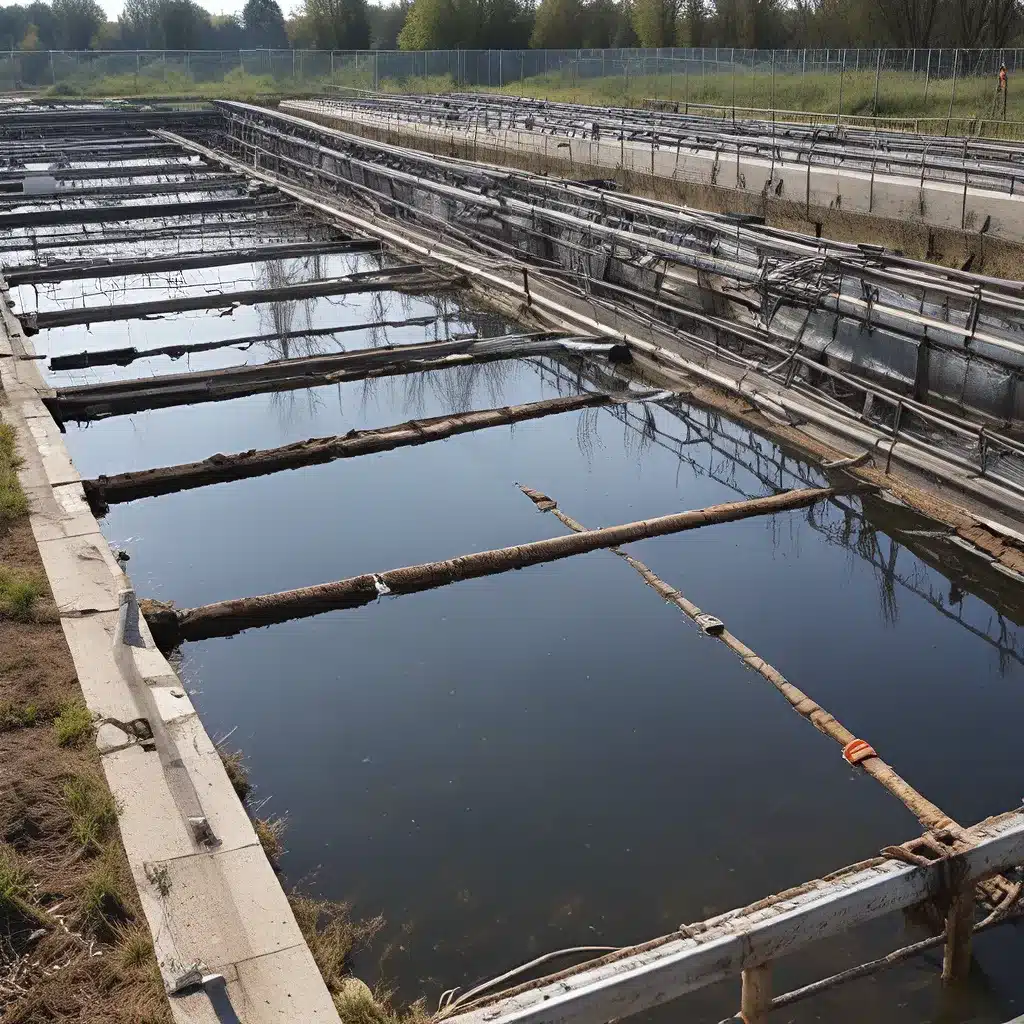
Unearthing the Challenges
As an environmental enthusiast, I’ve been fascinated by the topic of emerging contaminants in wastewater. It’s a complex and multifaceted issue that has been steadily gaining attention, and for good reason. These elusive pollutants are like a hidden menace, lurking in our water systems, posing threats that we’re only beginning to comprehend.
Let me paint you a picture. Imagine a bustling city, where the lifeblood of modern civilization – our water supply – is quietly being infiltrated by a diverse array of synthetic chemicals, pharmaceuticals, and personal care products. These emerging contaminants, or “ECs” as they’re often called, are making their way into our wastewater, and conventional treatment methods are struggling to keep up.
Studies have shown that these ECs can have far-reaching consequences, from disrupting the delicate balance of aquatic ecosystems to potentially posing risks to human health. And the kicker? They’re often present in our water at trace concentrations – parts per billion or even parts per trillion – making them incredibly difficult to detect and remove.
As I delve deeper into this topic, I’m struck by the sheer complexity of the challenge we’re facing. Wastewater treatment plants, designed to tackle traditional pollutants, are simply not equipped to handle the diverse and ever-evolving landscape of emerging contaminants. And the implications are far-reaching, affecting everything from the health of our waterways to the safety of our drinking water.
Unraveling the Tangled Web of Emerging Contaminants
Let’s take a closer look at the types of ECs that are causing such concern. The list is a veritable alphabet soup – pharmaceuticals, personal care products, nanomaterials, fire retardants, pesticides, plasticizers, surfactants, and the list goes on. These chemicals, once considered harmless or even essential for modern life, are now emerging as potential threats to the environment and human health.
One of the most troubling aspects of ECs is their ability to persist and accumulate in the environment. Many of these compounds are resistant to degradation, meaning they can linger in water bodies, sediments, and even living organisms for extended periods. And as they move up the food chain, the process of bioaccumulation and biomagnification can amplify their concentrations, creating a domino effect that reverberates through entire ecosystems.
But the real kicker? These ECs don’t just disappear once they’re flushed down the drain. Wastewater treatment plants are often the primary entry point for these contaminants into the environment, as they struggle to effectively remove them. And even when they do manage to capture some of the ECs, the resulting sludge can still contain significant amounts of these pollutants, which can then be spread onto agricultural land as fertilizer, perpetuating the cycle.
It’s a vicious, interconnected web, and it’s becoming increasingly clear that we need to rethink our approach to managing these emerging threats. But where do we even begin?
Confronting the Challenges: Strategies for Mitigation
As I delve deeper into this issue, I’m struck by the multifaceted nature of the challenge we’re facing. It’s not as simple as just “cleaning up” the water – the solutions require a holistic, multi-pronged approach that addresses the problem at its source.
One promising strategy is to focus on source reduction – tackling the problem before it even reaches the wastewater stream. This might involve developing greener alternatives to problematic chemicals, implementing stricter regulations on the use and disposal of certain compounds, or even encouraging consumers to be more mindful of their purchasing and usage habits.
But even if we can stem the tide of ECs at the source, the damage has already been done in many cases. That’s where innovative wastewater treatment technologies come into play. Advanced oxidation processes, membrane filtration, and adsorption technologies are just a few of the cutting-edge methods that are being explored to more effectively remove these elusive pollutants.
And it’s not just about the technology – the way we manage our water systems as a whole needs to evolve. Integrating real-time monitoring, leveraging big data analytics, and fostering collaborative partnerships between researchers, policymakers, and industry leaders will all be crucial in our efforts to stay one step ahead of the emerging contaminant challenge.
The Road Ahead: Navigating Uncertainty and Embracing Innovation
As I reflect on everything I’ve learned, I can’t help but feel a sense of both unease and cautious optimism. The problem of emerging contaminants in wastewater is complex, multifaceted, and constantly evolving. But the more I dig into the research and the innovative approaches being explored, the more I believe that we have the tools and the ingenuity to tackle this challenge head-on.
It won’t be easy, and there will undoubtedly be setbacks and surprises along the way. But by staying vigilant, embracing the latest scientific advancements, and fostering a collaborative spirit, I believe we can navigate these murky waters and emerge with a cleaner, safer water future.
After all, our water is the lifeblood of our communities, our ecosystems, and our very existence. And as responsible stewards of this precious resource, we have a duty to protect it, no matter how daunting the task may seem. So let’s roll up our sleeves, dive in, and get to work on solving the puzzle of emerging contaminants in wastewater.
Who knows, with a little ingenuity and a whole lot of determination, we just might uncover some surprising solutions along the way.


